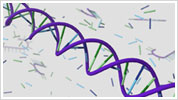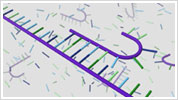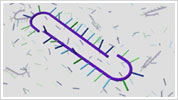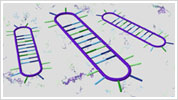Most molecular diagnostic techniques involve the creation of "designer molecules" that interact in some way with the DNA and RNA sequences that govern life processes. Talon's breakthrough is in the design of a molecule that interacts with target DNA in such a way as to create many copies of a circular product. A circular product can be purified and amplified without the "noise" and error implicit in other diagnostic techniques.

Talon’s process begins with double-stranded DNA, which is denatured to produce a single-stranded target. |
 A proprietary process allows probe molecules to interact with the target DNA so as to result in designer hairpin probes ("J-probes"). Repeating the process allows these probes to be multiplied ("amplified") without limit. |
 After a sufficient quantity of J-probes are created, the J-probes are joined ("ligated") to produce a circular result. |
 A wash of exonuclease enzyme is then introduced to digest all molecules other than the circular DNA, leaving a highly specific indication of the target sequence. |
If desired, the circular DNA can be further amplified through "rolling circle" or other techniques and submitted to any standard detection platform. |

